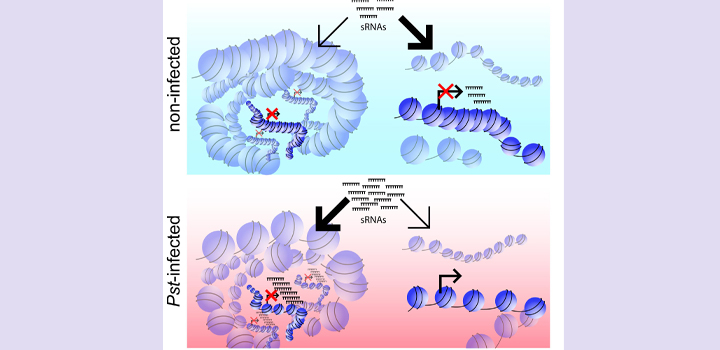Cambiagno et al. Plant J. 2018
Pattern recognition receptors (PRR) and nucleotide-binding leucine-rich repeat proteins (NLR) are major components of the plant immune system responsible for pathogen detection. To date, the transcriptional regulation of PRR/NLR genes is poorly understood. Some PRR/NLR genes are affected by epigenetic changes of neighboring transposable elements (Your) (cis-regulation). We analyzed whether these genes can also respond to changes in the epigenetic marks of distal pericentromeric TEs (trans-regulation). We found that Arabidopsis tissues infected with Pseudomonas syringae pv. tomato (Pst) initially induced the expression of pericentromeric TEs, and then repressed it by RNA-directed DNA methylation (RdDM). The latter response was accompanied by the accumulation of small RNAs (sRNAs) mapping to the TEs. Curiously these sRNAs also mapped to distal PRR/NLR genes, which were controlled by RdDM but remained induced in the infected tissues. Then, we used non-infected mom1 (Morpheus’ molecule 1) mutants that expressed pericentromeric TEs to test if they lose repression of PRR/NLR genes. mom1 plants activated several PRR/NLR genes that were unlinked to MOM1-targeted TEs, and showed enhanced resistance to Pst. Remarkably, the increased defenses of mom1 were abolished when MOM1/RdDM-mediated pericentromeric TEs silencing was re-established. Therefore, common sRNAs could control PRR/NLR genes and distal pericentromeric TEs and preferentially silence TEs when they are activated. This article is protected by copyright.
Authors: Cambiagno DA, Nota F, Zavalloni D, Rius S, Casati P, ASURMENDI S, Alvarez ME.



